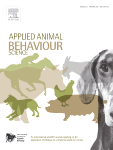Document type: end-of-project summary published on the U.S. Poultry & Egg Harold E. Ford Foundation's website
Author: Dr. Darrin Karcher
Preview: Research has shown that Salmonella persistence and transmission in poultry flocks can be influenced by various housing facility characteristics and flock management practices. However, the impact that different housing system options for egg-laying hens have on food safety remains unresolved. Further, the appearance of ectoparasites in cage-free housing systems has created challenges that impact bird welfare and egg quality. One of the challenges for cage-free production is the control of northern fowl mites. The impact of northern fowl mite infestation on Salmonella shed is not known.
The objectives of these projects were 1) to assess horizontal transmission of infection and invasion of internal organs after experimental S. Enteritidis and S. Kentucky infection of laying hens in indoor cage-free housing, and 2) to examine the role and impact of northern fowl mites (NFM) on laying hen performance, welfare and egg safety in a cage-free environment.
The results of this study for Objective 1 suggest that Salmonella infection can spread rapidly and extensively among hens in cage-free indoor housing, including a high frequency of internal organ involvement for invasive serovars such as S. Enteritidis. Vaccination reduced but did not prevent either internal organ colonization or horizontal transmission of infection. This confirms prior research which established that Salmonella vaccination can be a useful tool within comprehensive risk reduction programs but may not unilaterally provide complete protection against pathogen infection.
The differing results of this study for Objective 2 (Experiments 1 and 2) indicate that management decisions will have a dramatic impact on the ability of northern fowl mites to establish within a cage-free flock. The intact beak of pullets can play a role in mitigating ectoparasites in cage-free environments, yet, contributes to the exacerbation of cannibalism and large amounts of feather loss. The reduction in egg production and decrease in feather coverage may translate to decreased product for sale and an increase in cost as extra heat may need to be provided to account for the loss of feather cover. Moreover, pullets with trimmed beaks allow the northern fowl mite population to increase over the course of their production, resulting in a long-term infestation that can cause depressed egg production, influence egg quality measures and impact overall hen welfare.
In summary, these projects uncovered some of the challenges with cage-free laying hens and the long-term financial impacts that a company may experience.






